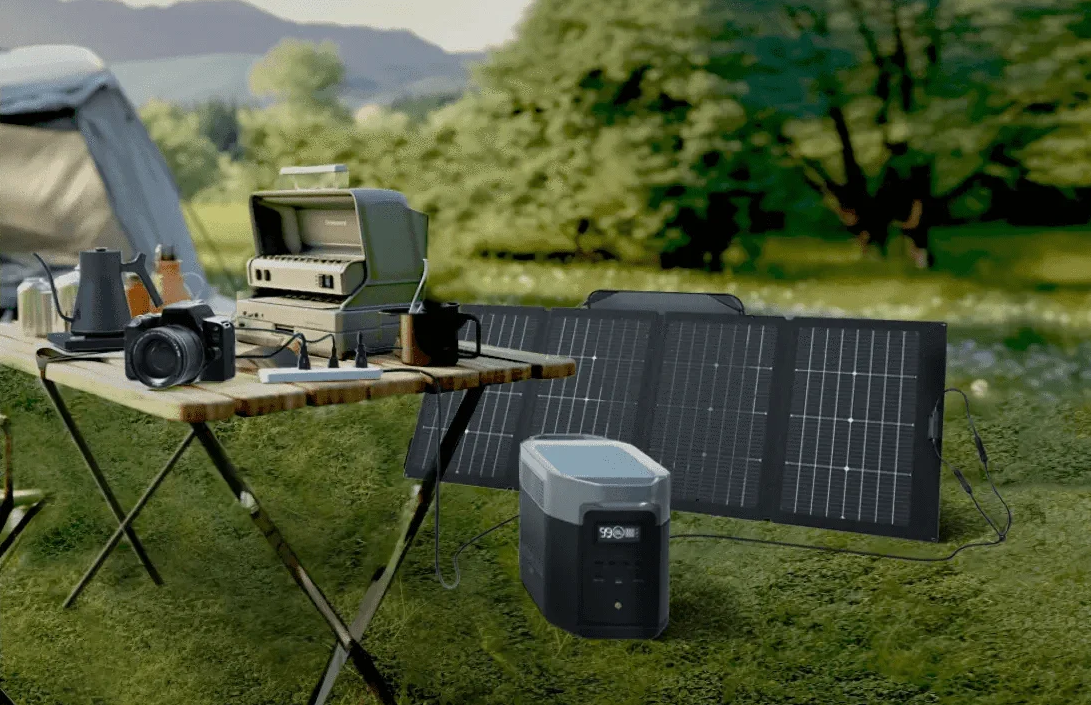- What Does mAh Mean?
- What Is Ah (Amp Hours)?
- Converting Between mAh and Ah
- How Does mAh Relate to Battery Life?
- Common mAh Ratings for Devices
- Common Ah Ratings for Devices
- mAh vs. Ah: What’s the Difference?
- How mAh Helps You Choose the Right Power Solution
- Real-World Example: EcoFlow Power Solutions
- Key Takeaways
Power Measurement Simplified: From Milliamp Hours to Amp Hours
- What Does mAh Mean?
- What Is Ah (Amp Hours)?
- Converting Between mAh and Ah
- How Does mAh Relate to Battery Life?
- Common mAh Ratings for Devices
- Common Ah Ratings for Devices
- mAh vs. Ah: What’s the Difference?
- How mAh Helps You Choose the Right Power Solution
- Real-World Example: EcoFlow Power Solutions
- Key Takeaways
If you've shopped for battery-powered devices or portable power solutions, you've undoubtedly encountered capacity ratings in mAh (milliamp hours) or Ah (amp hours).
Few things are more frustrating than investing in a power solution only to discover it doesn't have the capacity to meet your needs.
Understanding the difference between mAh and Ah is crucial for making informed decisions—whether you're buying a smartphone or a whole-home backup system like the EcoFlow DELTA series.
Learn everything you need to know about mAh, Ah, and how to convert between these vital battery capacity measurements below.
What Does mAh Mean?
mAh stands for milliampere-hour, a unit that measures electric power over time. It’s most commonly used to describe battery capacity, particularly in smaller devices like smartphones, cameras, power banks, and some portable power stations.
To put it simply:
1 mAh = 1 milliamp of current for 1 hour.
A 10,000 mAh battery can theoretically deliver 1,000 milliamps (or 1 amp) for 10 hours.
The higher the mAh rating, the larger the battery capacity—and the longer your device can run before needing a recharge (assuming power consumption stays the same).
What Is Ah (Amp Hours)?
Amp hours (Ah) is simply the larger-scale version of mAh. Since 1 amp equals 1,000 milliamps, Ah is used to measure the capacity of higher-power systems, such as:
RV and marine batteries
Electric vehicles
Home backup battery systems
A battery rated at 5Ah can deliver 5 amps of current for 1 hour, or 1 amp for 5 hours. The concept is identical to mAh, just scaled up for larger energy demands.


Converting Between mAh and Ah
The conversion between these units is straightforward:
1,000mAh = 1Ah
To convert from mAh to Ah:
Ah = mAh ÷ 1,000
For example, if a power bank is rated at 20,000mAh, that equals:
20,000 ÷ 1,000 = 20Ah
Understanding this conversion is essential, but remember: both mAh and Ah measure capacity, not power output or voltage. To calculate actual energy storage (in watt-hours or Wh), you'll also need to factor in the voltage.
How Does mAh Relate to Battery Life?
mAh (milliampere-hour) tells you how much electric charge a battery can store.
The higher the mAh, the longer your device can run before needing a recharge—if all other factors remain equal.
Example:
If your phone uses 500 milliamps (mA) per hour:
- A 3,000 mAh battery would last about 6 hours
- A 5,000 mAh battery would last about 10 hours
But Battery Life Also Depends On:
- Device power draw (how much current it uses)
- Usage patterns (screen brightness, apps running)
- Battery age and temperature
- Voltage (battery life is mAh × volts = total energy in Wh)
Quick Formula:
Battery Life (hours) = mAh ÷ Device Current Draw (mA)
So yes, more mAh generally means longer battery life, but it’s not the only factor. Always consider how much power your device actually uses.
Common mAh Ratings for Devices
Device | Typical Battery Capacity |
Smartphones (e.g., iPhone 14 Pro) | ~3,200 mAh |
Tablets (e.g., Samsung Galaxy Tab S8) | ~11,200 mAh |
Laptops (e.g., Dell XPS 15) | ~6,254 mAh |
Power Tools (e.g., DeWalt 20V Max) | ~5,000 mAh |
AAA Rechargeable Battery (e.g., Panasonic Eneloop) | ~800 mAh |
9V Lithium Battery (e.g., Tenergy) | ~1,200 mAh |
Bluetooth Headphones | ~500–1,200 mAh |
Digital Cameras | ~1,000–2,000 mAh |
Smartwatches | ~300–500 mAh |
Common Ah Ratings for Devices
Device | Typical Battery Capacity (Ah) |
Smartphones (e.g., iPhone 14 Pro) | 3.2 Ah |
Tablets (e.g., Galaxy Tab S8) | 11.2 Ah |
Laptops (e.g., Dell XPS 15) | 6.25 Ah |
Power Tools (DeWalt 20V Max) | 5 Ah |
AAA Rechargeable Battery | 0.8 Ah |
9V Lithium Battery | 1.2 Ah |
Bluetooth Headphones | 0.5–1.2 Ah |
Digital Cameras | 1–2 Ah |
Smartwatches | 0.3–0.5 Ah |
mAh vs. Ah: What’s the Difference?
Unit | Stands For | Used For | Scale | Example Devices |
mAh | Milliampere-Hour | Small electronic devices | 1,000 mAh = 1 Ah | Smartphones, tablets, cameras |
Ah | Ampere-Hour | Larger battery systems or tools | 1 Ah = 1,000 mAh | Laptops, power tools, solar systems |
How They Work
- Both measure battery capacity — how much current a battery can supply over time.
- The higher the number, the longer the battery can power a device (assuming similar voltage).
- The main difference is scale:
- mAh is used when numbers are small (like 3,000 mAh = 3 Ah).
- Ah is used for larger-capacity systems (like 100 Ah in solar batteries).
How mAh Helps You Choose the Right Power Solution
Understanding mAh helps when picking the right power bank or portable generator, especially for activities like:
Camping: Need to keep phones, lights, or GPS units charged for days? A 20,000 mAh power bank might be enough.
Traveling: Long flights or commutes? A compact 10,000 mAh charger can keep your phone alive.
Emergency Backup: For multiple devices or extended use, look for high-capacity batteries measured in Wh or Ah.


Real-World Example: EcoFlow Power Solutions
While mAh is a handy unit for smaller electronics, EcoFlow designs products with watt-hours (Wh) to offer a more accurate measure of total energy capacity. Here’s how some of our most popular solutions translate:
EcoFlow RIVER 2: 256 Wh (approx. 69,000 mAh at 3.7V) — great for day trips or small appliances.
EcoFlow DELTA 2: 1,024 Wh (approx. 276,000 mAh at 3.7V) — suitable for powering laptops, routers, or even a mini fridge during outages.
EcoFlow DELTA Pro: 3,600 Wh (approx. 972,000 mAh) — perfect for whole-home backup or RV setups.
Since many appliances and power tools run on AC or DC current, Wh is a better reflection of actual usability. That’s why EcoFlow uses watt-hours rather than mAh when advertising its capacity—especially for off-grid, backup, and mobile power users who need reliability and performance.
Key Takeaways
- mAh is a unit that tells you how much electrical charge a battery can store.
- More mAh means more battery life—assuming consistent power usage.
- Convert mAh to Wh to better understand energy across different voltages and devices.
- Use mAh as a rough guide for smaller gadgets, and Wh for larger systems.
- EcoFlow products use Wh-based ratings to offer clearer, real-world energy capacity and runtime estimates.
Whether you’re charging a smartphone or powering a campsite, understanding mAh is your first step toward choosing the right battery—and getting the most out of it.